Loads of artists like to paint from life, and though the traditional idea of an artist is one who can create work in situ, this is not me. Some of my worst work came into being when on field trips, and sketching on site. I find it extremely hard to create work when outside, or in life drawing classes. I don’t think any pieces which I’ve worked on in this manner have made it to be seen by the public (apart from one horrendous session at Rosslyn Chapel in my first year at ECA, where a group of Spanish tourists started taking pictures of a piece I was working on which I can only call a turd of a painting)
To produce my best work, I need to visit the place, and I take photographs, usually around 300 (!) of every little detail and angle I could ever wish to paint from. This way I have the first hand experience, where I can pull myself back to the atmosphere and ambience I felt when I was there. So with my Roslyn Chapel pieces, I produced work from my photos which I am extremely proud of. I could shut out my present surrounds, (a busy shared studio) put on some music and go back to the mind space I was when I was there. Here are a couple from that time in 2008- I tried to capture the weathered, dark stone, and the arcane atmosphere.
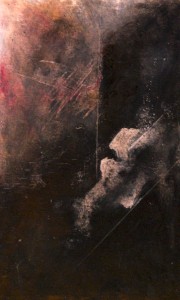
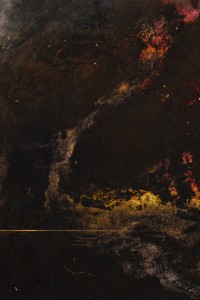
This applies to my collections which are drawn from historical photos. Though I cannot return to the Victorian age to see a class on dissection, students puffing on pipes to keep the cadaver smell at bay, I find through research and exposure to the subject I can produce work which captures the atmosphere of the picture I’m working from. A lot of my holiday time is spent visiting relevant resources, from local museums like Glasgow Anatomy Museum and Surgeon’s Hall, to The Old Operating Theatre in London, amongst others. It helps that medical history is a passion of mine, though I guess this is why I still produce paintings on this subject!
Here is a piece on the left from 2008, the very first painting I produced from the soup of medical history (this painting is in my personal collection due to it’s sentimental value)
and on the right, “Enlightenment,” completed in Summer 2014.
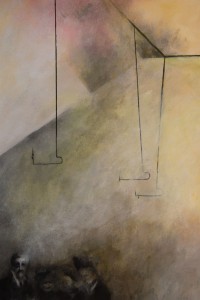
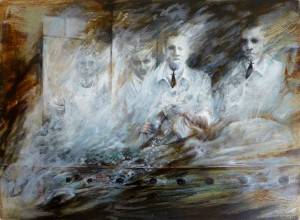
With my World War One collection it was a little more difficult to create an evocative atmosphere. The National Library of Scotland have an excellent collection of photos which are both fascinating and moving. I found with the WW1 photos that they are so powerful, and the masses of documentaries, books and resources that come with the Centenary can glean us a snapshot of life in the First World War. I can’t even begin to imagine what it would be like to live in the trenches, to fight in horrendous conditions, your life out of your hands, to live in fear of a bomb falling on your house, or worrying about your loved ones fighting overseas. My paintings are a reflection of our collective memory, how the people who lived through these days fade into the maelstrom of war and time. For me to claim to know how it felt like to be in their shoes would be untrue and disrespectful.
Tommies V and Waiting, both 2014
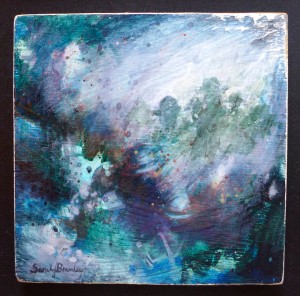
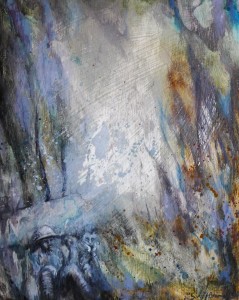
I hope this covers my method, and how I begin to create work. I find different subject require different handling and preparation, and everyone has their own way of approaching it, each as unique as the art which is developed! It’s important to work to your strengths, and though I totally endorse getting out of your comfort zone and stretching yourself, you don’t need to feel inadequate if your way of working doesn’t fall in line with your peers.
